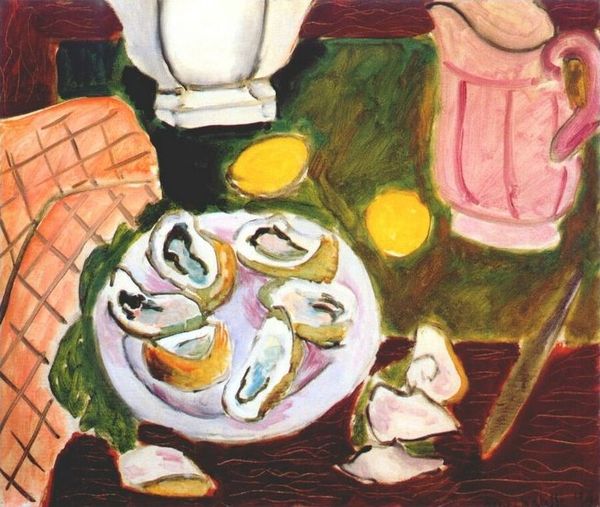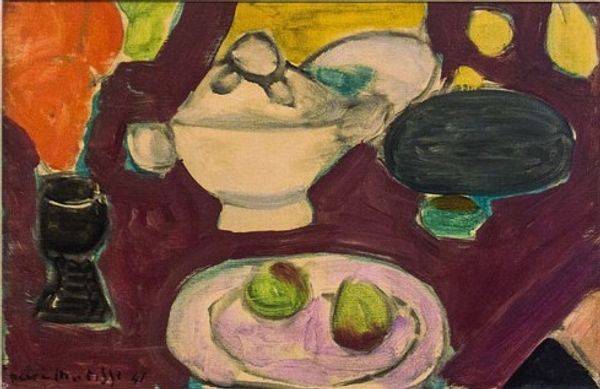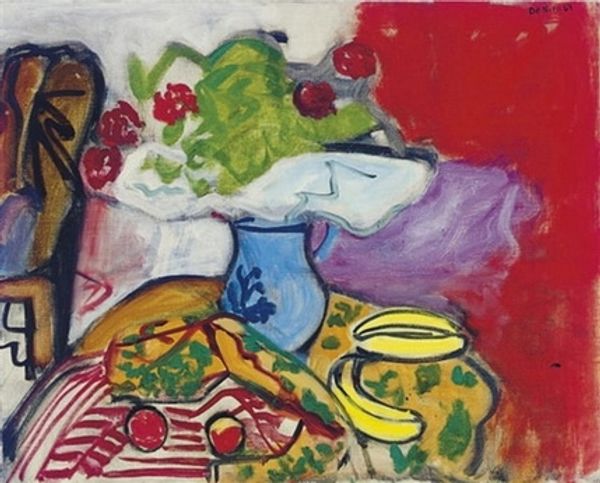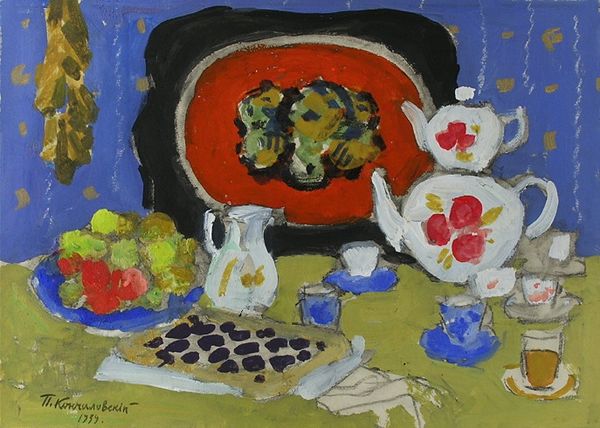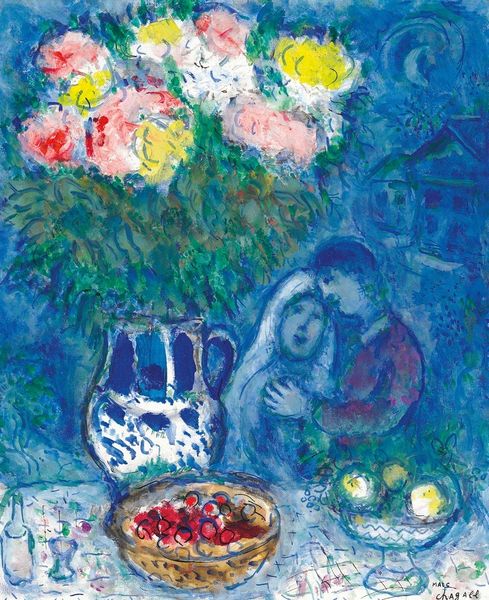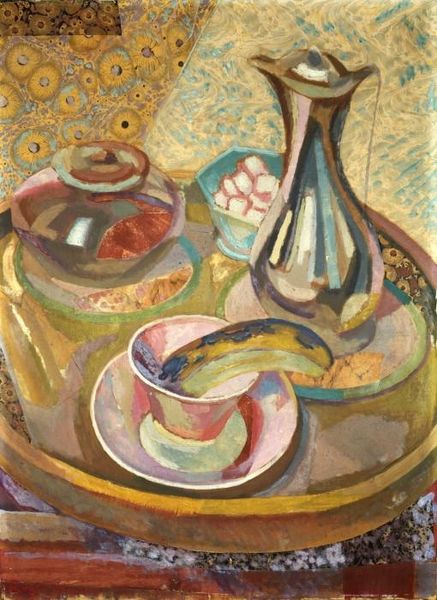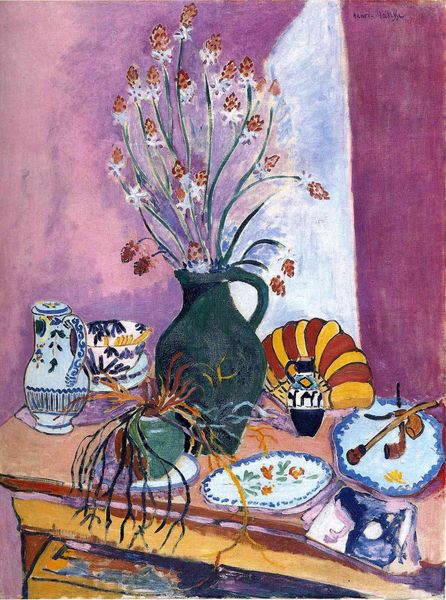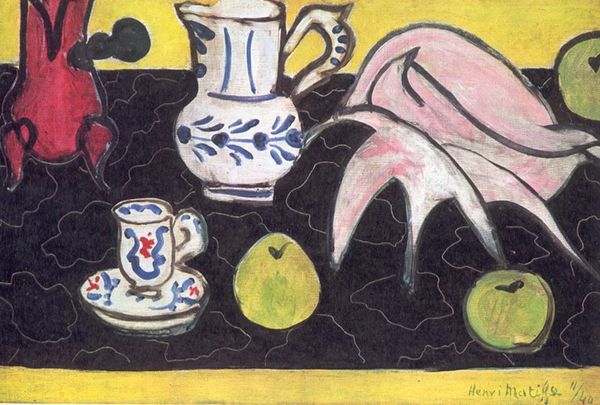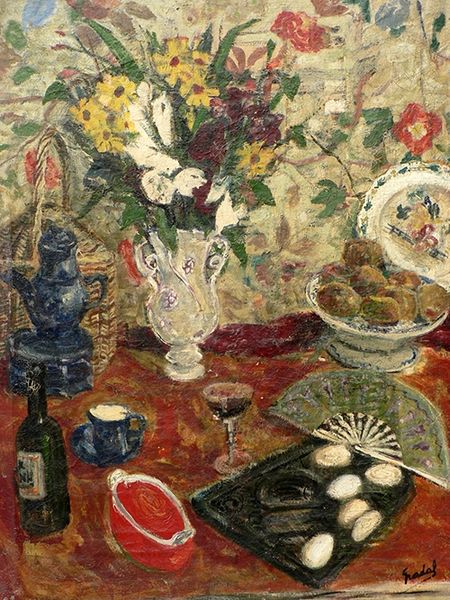
Copyright: Henri Matisse,Fair Use
Curator: Today we're looking at Henri Matisse's "Still Life with Shellfish," painted in 1940. Editor: My initial reaction is one of intense visual delight. The boldness of the red ground and the seemingly effortless brushstrokes give it an air of vibrant confidence. Yet, the very opulence and nonchalance depicted within a historical moment saturated with the Second World War makes one wonder about the position of art during conflict. Curator: Precisely. Look closely at the composition—the flattening of perspective, the simplification of forms into near geometric shapes. He reduces the objects to their essential elements of line and color, liberating them from representational constraints. Editor: While I agree that the forms are strikingly simplified, this move can be understood as a strategy. By eschewing rigid realism, Matisse opens up the possibility for greater emotional expression, reflecting not just a scene, but also his personal subjectivity within a fractured moment in France's history. How can this display of personal pleasure not seem tone deaf? Curator: One could counter that within that atmosphere of anxiety and scarcity, he is deliberately championing the sensory world, reclaiming simple joys as a radical act of self-preservation. Look at the treatment of the shellfish; they’re not rendered naturalistically but are evoked by swirls of color and playful lines, so the question must be asked whether one is better than the other? Editor: Absolutely, but his self-expression has real world consequences. I appreciate your point about sensory experience, but perhaps this approach serves to highlight the privilege and perhaps obliviousness that allowed such carefree indulgence to persist against a very dark period in history? I cannot view an aesthetic representation without acknowledging this context. Curator: I appreciate your contextual reading, but I can’t help being mesmerized by his manipulation of form and colour to evoke feelings that move past pure pleasure and into something… complicated, yes. A celebration in times of trauma is indeed provocative. Editor: Precisely, its enduring value lies in the ongoing questions it demands we address: Of art's positionality in an increasingly unequal society; of our ethical responsibility when engaging aesthetic representation. Curator: I would hope others are encouraged to meditate on that push and pull of joy and sorrow, presence and absence, as they engage with the piece.
Comments
No comments
Be the first to comment and join the conversation on the ultimate creative platform.
